
There are more than 30,000 lakes in Florida, a combination of man-made and natural, many of these lakes are utilized as the water source for irrigation systems serving residential communities, commercial spaces like shopping malls, golf courses and sports or training grounds.
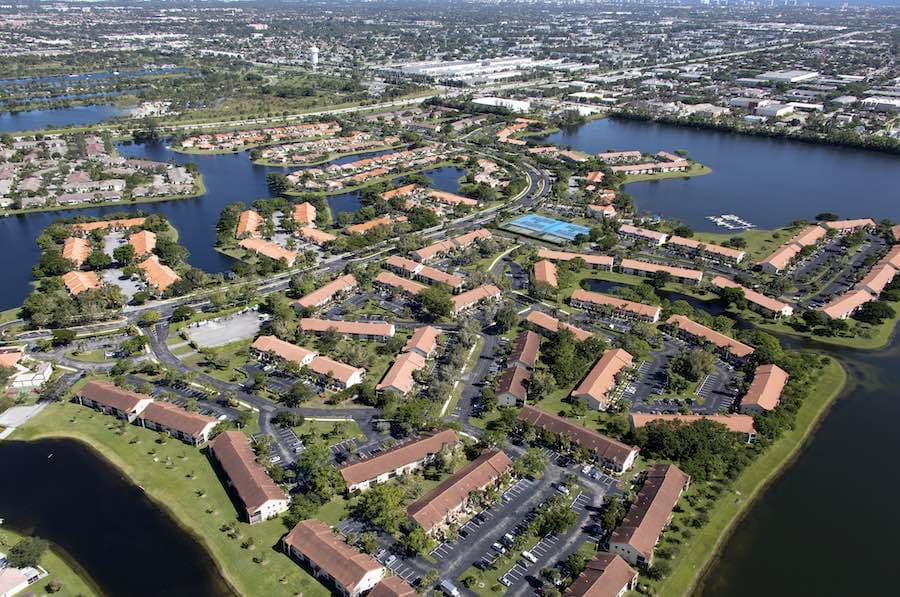
Here at Hoover, we specialize in designing, engineering and installing custom built irrigation solutions which play a huge role in maintaining the green and healthy vegetation that millions of visitors from around the world expect to see when they come to Florida. We know from experience that the best system in the world can cease to operate at optimum efficiency if the source from which the water is being drawn is allowed to degrade or become polluted. This is a particular issue for lake water used for irrigation, since many of these lakes are, by their very nature, closed systems.
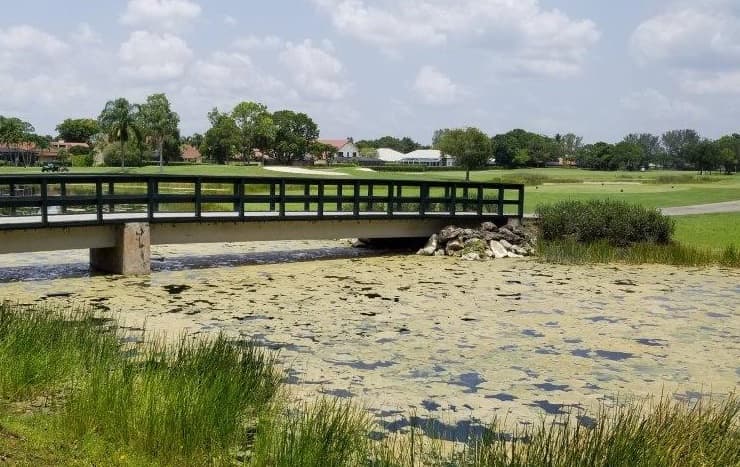
The main source of water which makes up the body of an irrigation lake is likely to consist almost entirely of rain and surface water run-off. The run-off may contain substances drawn from urban storm water and agriculture, such as fertilizers, sediments, a range of chemicals, nutrients and fecal bacteria. Once present in an irrigation lake these substances can remain over long periods of time, sometimes becoming a part of the sediment at the bottom of the lake for a period of decades. If the sediment of an irrigation lake is found to be heavily polluted in this way the solution often involves dredging the lake to remove the accumulated material and either sending it to a land-fill or having it treated as contaminated material.
Even if the issue of contaminated water in an irrigation lake doesn’t quite reach levels serious enough to require a full-scale dredging operation, it can still be enough to wreak havoc across an irrigation system.
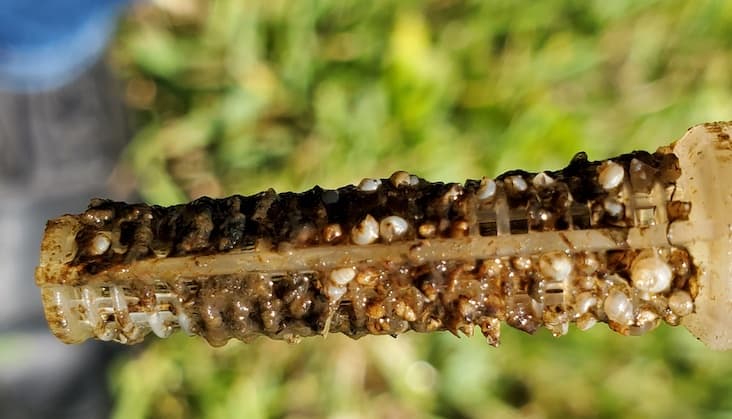
Drippers and micro-sprinklers, for example, can be blocked by sediment or soil floating in the water sourced from the irrigation lake. Other examples of contaminents include invasive species of bryozoa (invertebrates that feed on bacteria, and sometimes called "moss animals") that build up, clog and eventually render irrigation equipment useless, algae (including the blue-green algae, cyanobacteria, present in all Florida water bodies), small plants, insects and their maggots, and a range of other aquatic plants, micro-organisms and tiny molluscs.
While the use of filters and floating intakes can mitigate the issues caused by polluted water to a degree, the best solution – as well as the one that costs the least in the longer term – is always going to be to take measures to protect the health of the irrigation lake water in the first place. If enough foreign substances make their way into the system they can clog everything from sprinkler heads and screens to pipes, pumps and intakes.
Another common problem, but one which is less visible than sediment or debris in the water, is the presence of calcium carbonate, iron or manganese oxides in the water. These substances can react with liquid fertilizers and other contaminants to trigger scaling which wreaks havoc throughout an irrigation system. Over and above the efficient operation of the irrigation system itself, the health of the water in an irrigation lake can impact the health of the vegetation which is being irrigated. Despite the complexity involved in installing and operating a genuinely smart irrigation system, the principles at the heart of such a system are relatively simple. Not least, that the healthier the water sourcing the system, the healthier the turf being irrigated is likely to be.
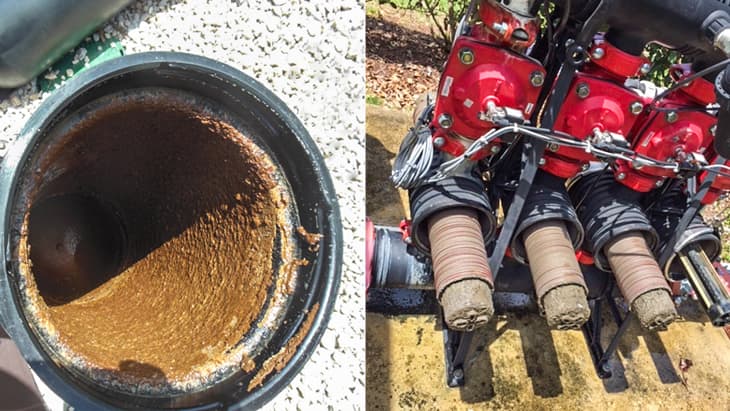
In short, healthy irrigation lake water:
While we are talking lakes used expressly for irrigation here, it's worth acknowledging the widespread and justified concern around the pollution in Florida's lakes.
The issue of polluted lake water is one which impacts in the state of Florida more than anywhere else in the US. The reasons for this are complex, ranging from the fact that the state as a whole was reclaimed, over the years, from Lake Okeechobee, the Everglades, and mangrove swamps, and is particularly flat with an absence of highlands. This, combined with the densely populated nature of the state, has created a situation where, according to a study carried out by the Environmental Integrity Project to track the progress of the Clean Water Act, Florida has more polluted lakes than anywhere else in the US. At its extreme, a polluted lake, can be one which contains low levels of oxygen and high levels of fecal matter and bacteria. One such instance, in March 2022, involved Lake Washington, main source of drinking water for more than 170,000 people served by the city of Melbourne's water system, which was found to contain harmful blue-green algae toxins. The result was a warning from Florida health officials not to swim, wade, boat in or eat fish from the lake, or even let a dog sip the water.
While that may seem like an extreme case, the fact of the matter is that the onus is on anyone who relies on an irrigation lake to supply their system to take proactive steps to maintain the health of the water.
The first step toward building a plan for maintaining the health of the water involves collecting samples and having them analyzed to check for underlying chemical problems or the presence of an imbalance in the nutrients present. Vital metrics to check – and re-check on a regular basis – include nutrient levels, pH and dissolved oxygen. Knowing what the levels in the lake water are is the first step toward introducing measures which can either maintain healthy levels or – in some cases – rebalance those levels.
An imbalance in the nutrient levels in an irrigation lake – in particular high levels of nitrogen and phosphorus – can promote uncontrolled growth of vegetation and algae within a lake. Left unchecked, aquatic vegetation of this kind can clog valves, screens and nozzles, reducing the amount of water being drawn from the lake and used for irrigation purposes. Once clogged, components like these need to be cleaned or replaced – the first is an inconvenience, the second a potentially major expense if it happens repeatedly. If less water than unusual is being drawn through a clogged screen then the system as a whole will have to work harder to maintain the required levels of irrigation, imposing more staring and wear on everything from pumps to pipes and sprinkler heads.
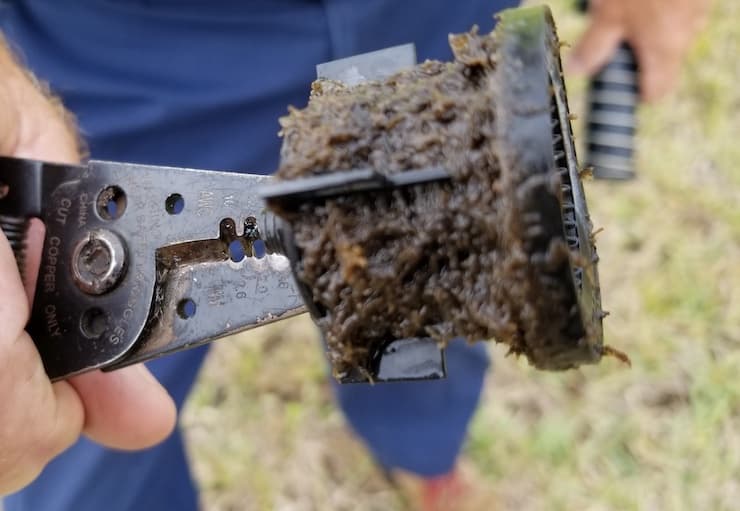
If debris enters the system and manages to damage a valve, this can result in certain zones of a system either not turning on or not shutting off. Either would clearly be highly damaging leaving vegetation over or under watered and potentially wasting thousands of gallons of water. If bacteria enter the irrigation system in a high concentration, on the other hand, it could conceivably pass through without damaging the components but then slowly poison the soil and vegetation being irrigated over a period of time. Too much salt in the water can lead to a buildup of scaling, causing main supply pipes and sprinkler heads to become blocked or to corrode, causing leaks or insufficient water pressure.
Submerged aeration systems can be placed in an irrigation lake to introduce more oxygen to the water, thus reducing the levels of freely available nitrogen and phosphorus. A similar impact can be achieved in more shallow lakes through the installation of floating fountains which – as well as circulating the water and introducing more oxygen – create a pleasing visual impact.
In some cases, the nutrient levels in an irrigation lake may also need to be "re-balanced" by the introduction of products which reduce the presence of harmful nutrients. Rebalancing of this kind should only be carried out by experts with experience of understanding just what is needed to be introduced to re-balance the water in an irrigation lake.
Re-balancing the nutrient levels within the water can be highly effective, but an even better solution involves working to prevent the introduction of nutrients into the water in the first place. Many nutrients enter the water of the lake as run-off during and following heavy rainfall. Run-off of this kind can carry materials such as leaves, animal waste, grass clippings, fertilizers and weed killers, all of which might normally be present on shore as part of a landscape management program, but which will cause problems once introduced to the water.
Buffer zones can be created around the shoreline of an irrigation lake in order to stop this run-off reaching the water itself. Dense turf planted in a radius of 3-6 feet from the edge of the water can do much to absorb these nutrients before they have an impact, at the same time as preventing the natural phenomenon of the shoreline eroding over time. Buffer zones of this kind can be planted with native grasses and flowering species chosen to match the wider environment. As well as creating a zone which minimizes run-off, planting of this kind can visually enhance the shoreline of an irrigation lake, promote the presence of native birds and even help to reduce the number of mosquitoes present. Where planting isn’t naturally possible, mesh products could be used to hold the soil in place and form the basis of planting, and some lakes make use of biodegradable logs made of substances such as coconut fibers.
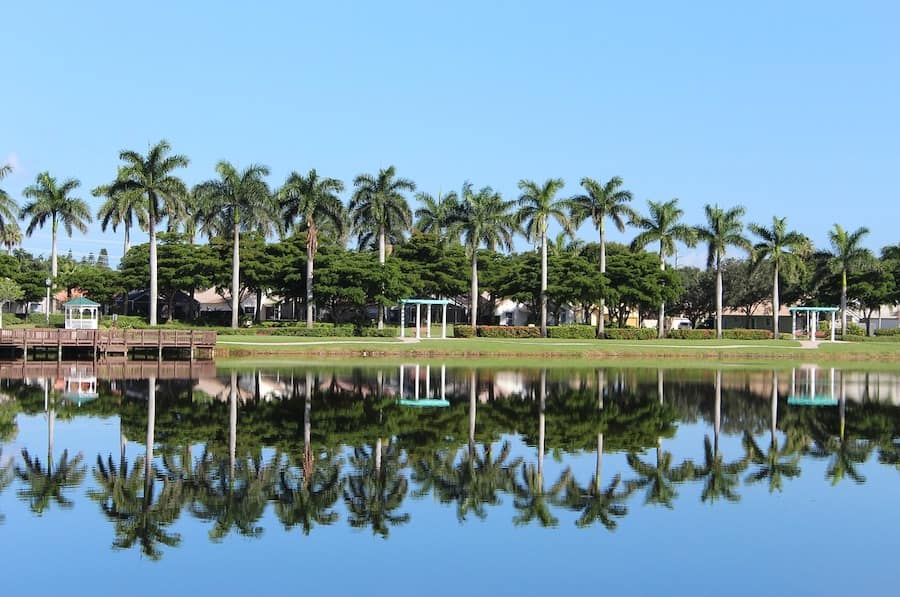
The combination of control over the system and vigilance on the part of those in charge could create a situation in which day to day irrigation is maintained and optimized, while the wider system can be upgraded one pump and sprinkler zone at a time, in an affordable and convenient manner. What most of the advice we can give to those in charge of irrigation systems boils down to is to maintain vigilance, understand what the factors which can cause issues across an irrigation system are, and learn how to spot the earliest possible warning signs of those issues.
Given the negative impact that polluted water can have on all aspects of an irrigation system there are few things more important for anyone managing that system than maintaining the health of the water in the water supply. The good news is that, with the right levels of vigilance and the help of experts in the field, the measures that need to be taken to protect an irrigation lake are relatively easy to achieve.